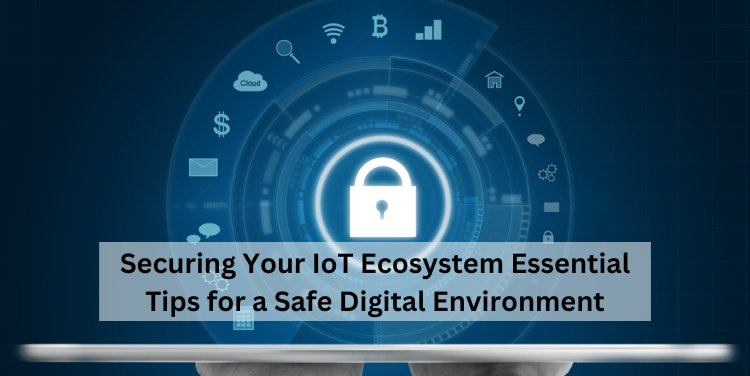Securing Your IoT Ecosystem: Essential Tips for a Safe Digital Environment

Title: Securing Your IoT Ecosystem: Essential Tips for a Safe Digital Environment
Introduction: As the Internet of Things (IoT) continues to proliferate, the need for robust security measures becomes increasingly critical. Building a secure IoT ecosystem is essential to protect sensitive data, preserve privacy, and prevent potential cyber threats. In this article, we'll explore some key tips for ensuring the security of your IoT devices and infrastructure.
-
Conduct a Risk Assessment: Before implementing IoT devices and systems, conduct a thorough risk assessment to identify potential security vulnerabilities and threats. Consider factors such as data privacy risks, network vulnerabilities, and potential points of entry for attackers. By understanding your risk landscape, you can develop a targeted security strategy to mitigate potential risks proactively.
-
Implement Strong Authentication: Ensure that all IoT devices and components within your ecosystem implement strong authentication mechanisms. Use secure protocols such as OAuth, SSL/TLS, or mutual authentication to verify the identity of devices and users before granting access to sensitive data or resources. Strong authentication helps prevent unauthorized access and reduces the risk of data breaches.
-
Encrypt Data in Transit and at Rest: Encrypt all data transmitted between IoT devices and backend systems to protect it from interception or tampering. Use robust encryption algorithms such as AES or RSA to secure data both in transit and at rest. Additionally, implement secure key management practices to ensure that encryption keys are properly protected and rotated regularly to maintain confidentiality and integrity.
-
Keep Software Up to Date: Regularly update firmware and software on IoT devices to patch known vulnerabilities and address security flaws. Establish a systematic process for monitoring and applying updates to ensure that devices remain protected against emerging threats. Consider leveraging over-the-air (OTA) updates for remote device management and patch deployment to streamline the update process and minimize downtime.
-
Segment Your Network: Segment your IoT network to isolate devices with different security requirements and risk profiles. Implement network segmentation and access controls to prevent unauthorized communication between devices and limit the impact of potential breaches. By dividing your network into separate zones based on security policies, you can contain security incidents and prevent lateral movement by attackers.
-
Monitor and Analyze Device Behavior: Deploy monitoring and analytics tools to track the behavior of IoT devices and detect anomalies indicative of security incidents or breaches. Leverage techniques such as anomaly detection, machine learning, and behavioral analysis to identify suspicious activities and unauthorized access attempts. By continuously monitoring device behavior, you can respond promptly to security threats and prevent potential data breaches.
-
Establish Incident Response Plans: Develop comprehensive incident response plans outlining procedures for detecting, analyzing, and mitigating security incidents within your IoT ecosystem. Define roles and responsibilities for incident response teams and establish communication channels for coordinating response efforts. Conduct regular drills and simulations to test the effectiveness of your incident response plans and ensure readiness to handle security incidents effectively.
Building a secure IoT ecosystem requires a proactive and multi-layered approach to address the evolving threat landscape effectively. By following these essential tips and implementing robust security measures, organizations can safeguard their IoT deployments, protect sensitive data, and maintain the trust of their customers and stakeholders in an increasingly connected world.
What's Your Reaction?















